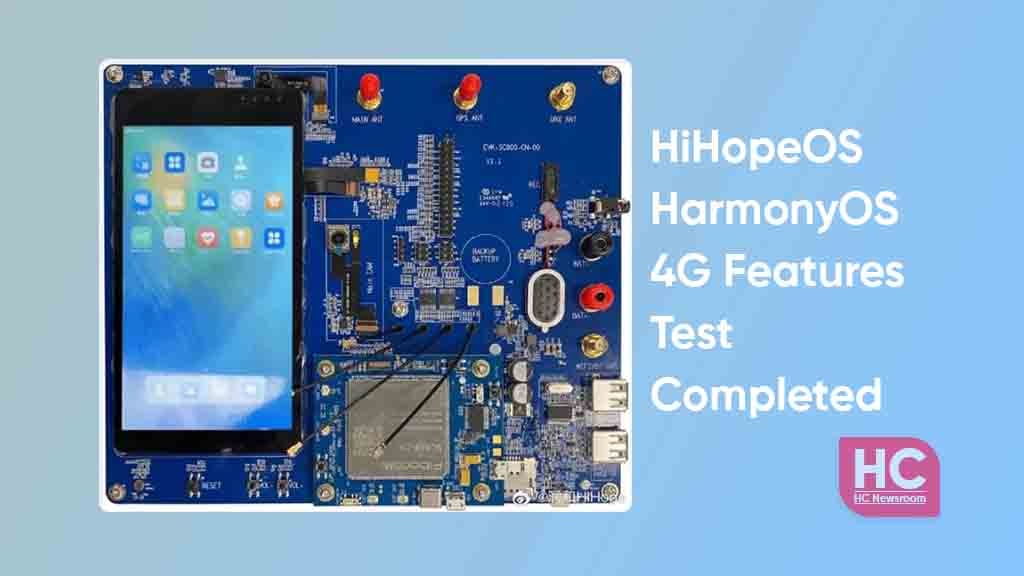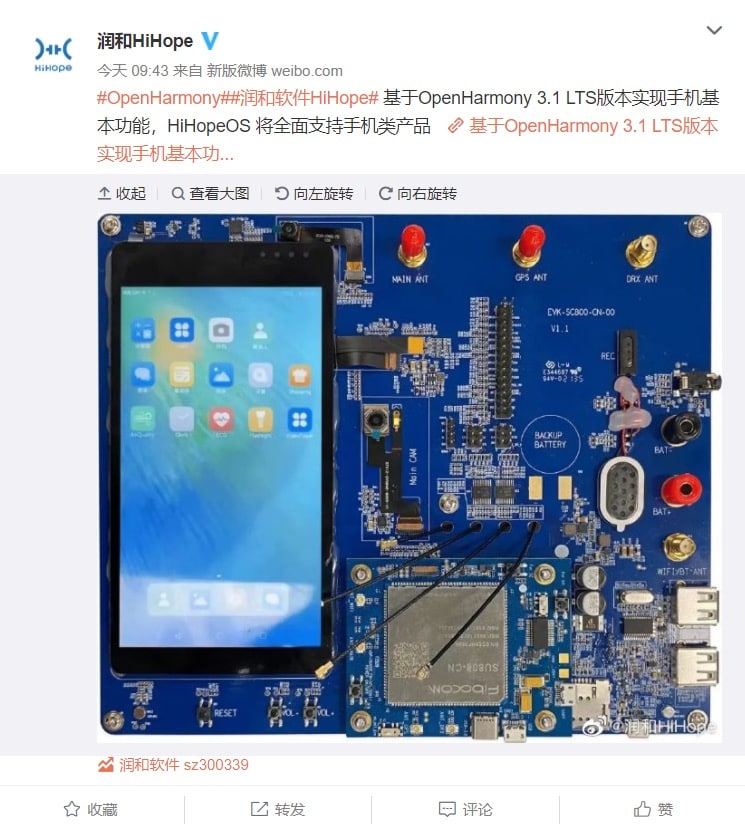HarmonyOS
HiHopeOS 4G mobile chipset tests HarmonyOS features

HiHopeOS community has announced that Chinese software maker – Runhe Software has completed the open source HarmonyOS project – OpenHarmony system adaptation based on the Chinese 4G chipset. This achievement confirms that HiHopeOS is based on OpenHarmony 3.1 and has the ability to develop smartphone products.
HiHopeOS currently supports the most common features of HarmonyOS for 4G chipsets including smartphone level of user experience. This includes supports making and receiving calls, sending and receiving text messages, sending and receiving emails (cellular network), instant messaging (cellular network), Music player, notepad, and other key apps.

HiHopeOS 4G chipset system:
The Chinese 4G chip that has been adapted to the HiHopeOS standard version of Runhe Software supports LTE CAT4, integrates Mali GPU, DPU, GSP, and other graphics acceleration hardware, supports FDD / TDD-LTE, WCDMA, GSM wireless communication mode, and Wi-Fi / BT and other near Distance wireless transmission technology, onboard 2G RAM, 16G ROM storage.
It is also equipped with front and rear dual cameras, touch screen, speaker, microphone, SIM card slot, SD card slot, battery, etc., and can be widely used in smart payment, smart robots, smart homes, and other industries fields.
- Calling capability: On-board high integration supports LTE CAT4 SoC, supports FDD / TDD-LTE, WCDMA, GSM wireless communication modes, supports making calls, sending and receiving text messages.
- Cellular network: The onboard 4G CAT4 SoC supports cellular data module, cellular data management, network interaction, etc., and realizes cellular data surfing based on the operator’s network.
- Web browser: It integrates a web browser application based on the stage model and related interfaces to realize web page access.
- Distributed capability: Support distributed soft bus, distributed application flow, distributed database, distributed data object, support local database access and cross-application database access, and other capabilities.
Currently, the basic operating system feature adaptation and peripheral adaptation of the Chinese 4G chip platform have been completed, including the adaptation of basic peripherals such as UART, IIC, and SPI, and the adaptation of features such as Audio, Voice, Video, Camera, LCD, and GPU.
The development of features such as making and answering calls, sending and receiving text messages, sending and receiving emails (cellular network), instant messaging (cellular network), music playback, and video playback has been realized.
- Compatibility evaluation: HiHopeOS has obtained the OpenHarmony compatibility evaluation certificate, and the development board will also submit the OpenHarmony compatibility evaluation in the near future to ensure the stable operation of the application and provide the application with a consistent interface and business experience.
- Productization: Positioned to focus on wireless smart payment, smart robots, smart home, industrial handheld, intercom equipment, logistics cabinets, vending machines, and other industry fields and application scenarios, providing smart product solutions based on OpenHarmony.
- Code into the mainline: Runhe Software will gradually integrate the relevant adaptation code into the OpenHarmony mainline, and continue to contribute to the OpenHarmony open source project.
(via – ithome)






